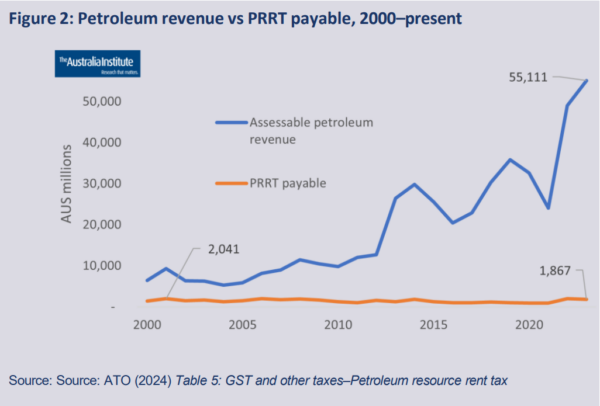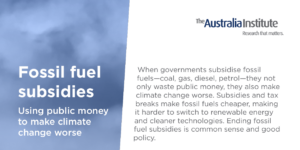Australia’s gas policy mess | Fact Sheet

Gas companies and the Australian government claim that Australia faces gas shortages, while multinational exporters are shipping record volumes of gas out of Australia. The prices that Australians pay for gas have gone up, while government revenue from gas production has gone down. What’s going on?
Exports and prices
Gas production in Australia has tripled since 2010, but domestic consumption has barely changed. This means that around 80% of gas produced in Australia is exported.
Gas export terminals opened at Gladstone in Queensland in late 2014. This meant that for the first time, gas could be exported from Australia’s east coast, giving gas companies the option to sell Australian gas into higher-priced Asian markets. This, in turn, meant that Australians suddenly had to pay world prices for domestically-produced gas.
Suddenly, Australian wholesale prices tripled from $3 per gigajoule (GJ) to $10 per GJ, and often rose even higher.

Payments to government
The public owns the gas under the ground. Royalties are the fees mining companies pay for the right to use this gas. However, most multinational exporters pay no royalties, and minimal tax. In the past four years, $149 billion worth of liquified natural gas was exported from Australia royalty-free.
The Australia Taxation Office (ATO) has called the oil and gas industry “systemic non-payers” of tax. The Australian Government receives more money from:
- Income tax paid by teachers than tax paid by the gas industry.
- HECS repayments than Petroleum Resource Rent Tax paid by the gas industry.
- Beer excise than taxes paid by Chevron, Exxon, Woodside and Shell combined.
Gas companies made $55 billion in 2023, because the war in Ukraine increased world energy prices. Despite this record-breaking revenue, payments to government from the Petroleum Resource Rent Tax (PRRT) were lower in 2023 than in 2001.

Jobs
The gas industry employs few people. Just 16,200 people in Australia work in oil and gas extraction, or 0.11% of the 14.4 million jobs in the country. For comparison, manufacturing employs 902,900 people and the health sector employs 2.2 million.
Emissions
Emissions from the supply and use of natural gas accounted for almost a quarter (24%) of Australia’s total emissions in 2022. This doesn’t include emissions from Australia’s gas exports, which reached 256 million tonnes CO2-e in 2022–23.
Governments choose royalty and tax levels. It is a choice to give away gas royalty-free. It is a choice to tax the industry so lightly. By choosing instead to increase the PRRT and actually collect revenues from the gas industry, the Commonwealth Government could have billions of dollars more to spend on public services.
Related documents
Between the Lines Newsletter
The biggest stories and the best analysis from the team at the Australia Institute, delivered to your inbox every fortnight.
You might also like
Fossil fuel subsidies
When governments subsidise fossil fuels—coal, gas, diesel, petrol—they not only waste public money, they also make climate change worse. Subsidies and tax breaks make fossil fuels cheaper, making it harder to switch to renewable energy and cleaner technologies. Ending fossil fuel subsidies is common sense and good policy.
The great gas rip off: how the government can stop us all getting burned
The Albanese government could soon intervene to start fixing one of the biggest ongoing public policy fiascos in this country’s history: Australia’s rampant, uncontrolled gas export industry.
Why a fossil fuel-free COP could put Australia’s bid over the edge
When the medical world hosts a conference on quitting smoking, they don’t invite Phillip Morris, or British American Tobacco along to help “be part of the solution”.


